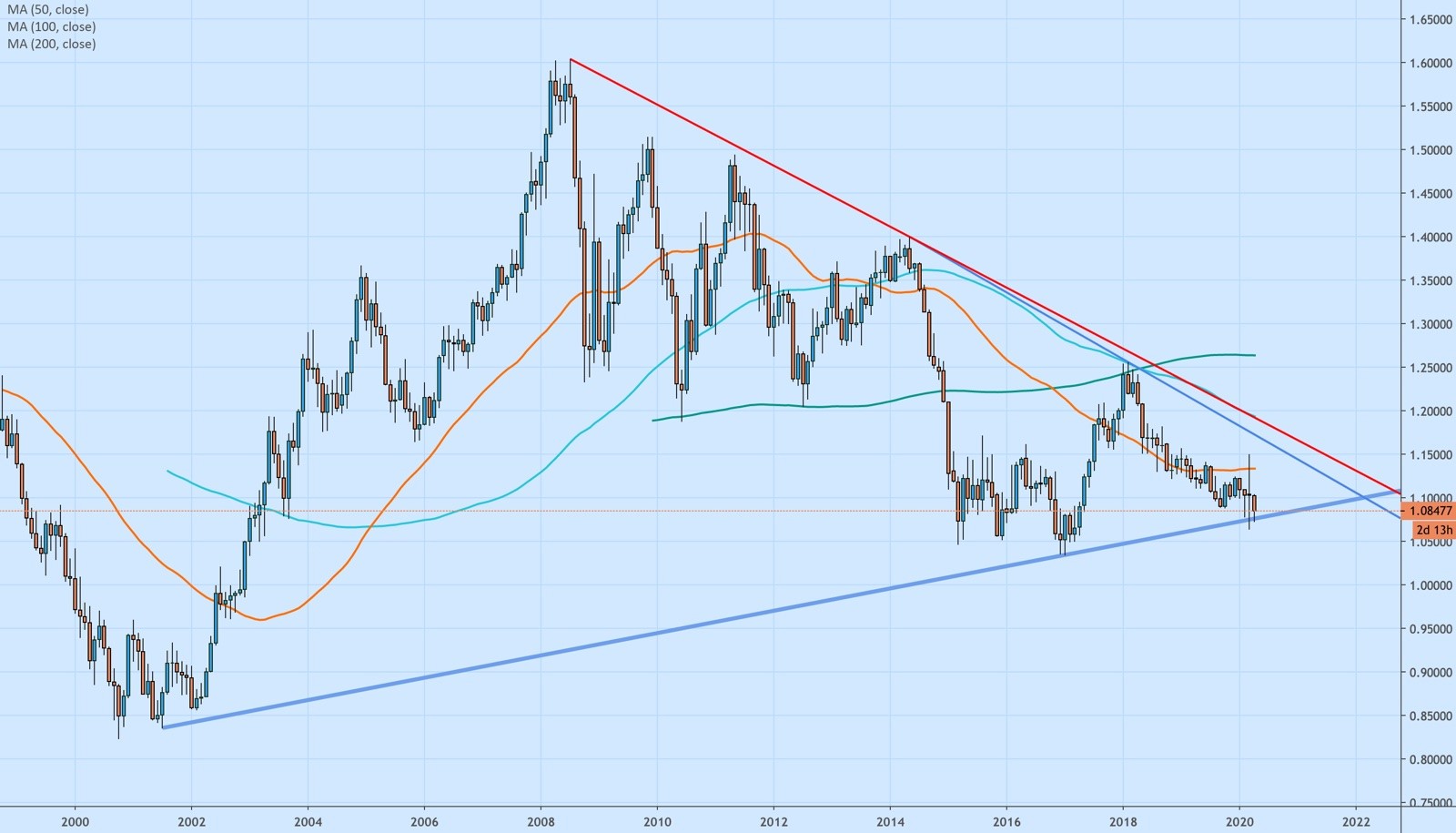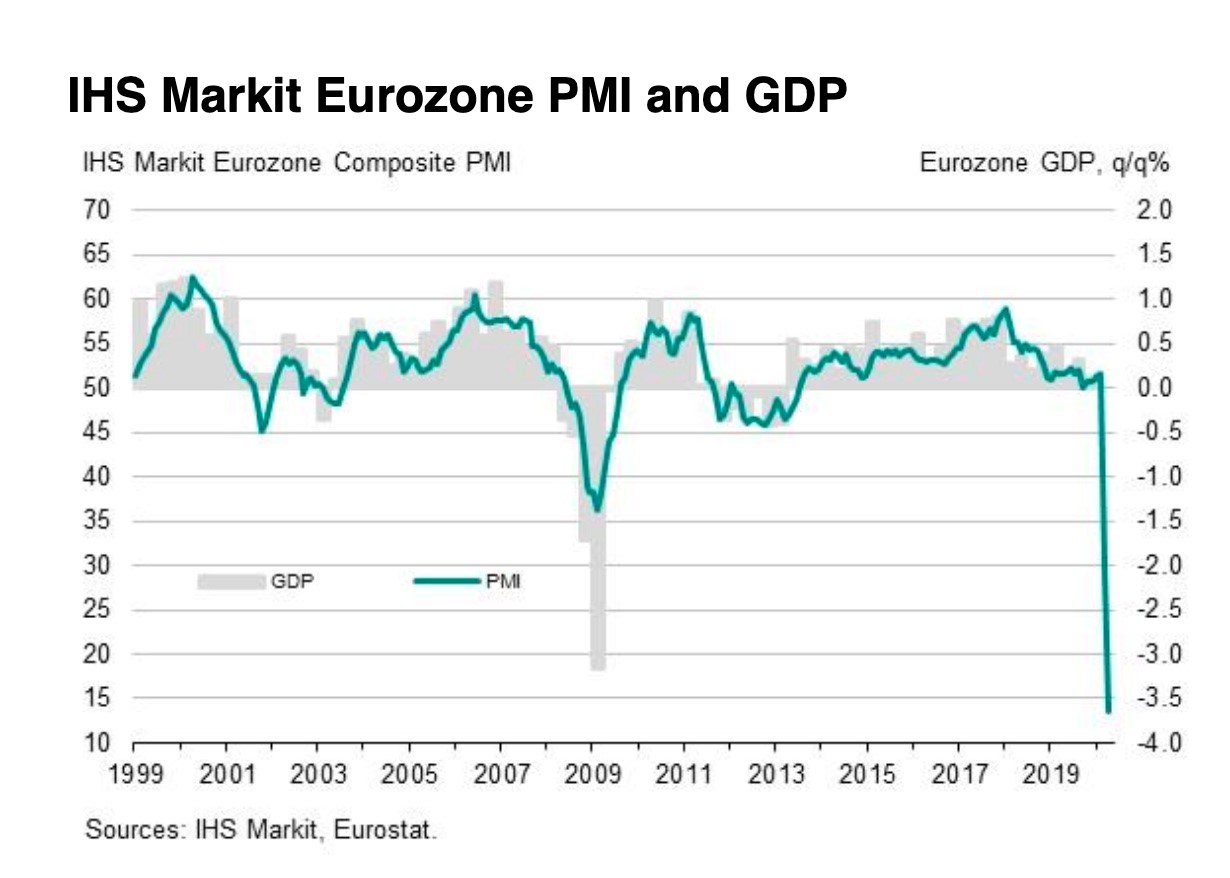The survival of the Eurozone depends on its response to the coronavirus crisis
Euro region's economy grinds to a halt as businesses, factories shutter
Ever since its inception, the Eurozone and the block’s single currency, the euro, have had to face skeptics in their droves. Many politicians, especially in the periphery of Europe, have expressed their dissatisfaction with the economic dislocations across the euro area, such as labor and capital fleeing to northern European countries.
As recently as a month ago, former Greek finance minister Yanis Varoufakis said that the coronavirus has revived the euro crisis. Just like during the Euro-area sovereign debt crisis in 2011, the European Central Bank stepped in and went all out to try and prevent irreversible damage to the bond markets caused by none other than the new European Central Bank President Christine Lagarde.
During her press conference on March 12, she made an enormous gaffe by saying that the ECB won’t act to address bond market imbalances between EU countries. Italian debt securities sold off, sending the EUR/USD exchange rate into a tailspin. She needed to issue a “clarification” the next day, saying that she was misunderstood.
The ECB, in fact, announced a new €750 billion bond-buying program to reassure markets and offset the damage caused by Lagarde’s remark. By the end of March, the EUR/USD exchange rate stabilized and then rebounded strongly, trading back above the $1.10 mark.

At the time of writing, the EURUSD is flirting with a key long-term trend-line on the monthly chart. What happens in the coming weeks will be crucial for the next long-term move higher or lower. Strong bids emerged at end of March and in April keeping prices above 1.07. Profit-taking prompted a wave of buy orders on part of short sellers in the pair, driving a massive surge almost to $1.1150.
Unprecedented Economic Downturn
Massive bond-buying campaigns by central banks across the globe, propped up stock markets, including the ones in Europe. That said, economic data for March has so far been abysmal. The readings for the key European manufacturing and services indices were the weakest ever.

The EUR/USD exchange rate came under pressure again, dropping as low as $1.0727, when these figures were released. Though pressure on the single European currency continues, we are going to examine the factors that might trigger the next big move up or down in the coming weeks.
IHS Markit’s Flash Composite Purchasing Managers’ Index (PMI) for the Eurozone, which measures business confidence in both manufacturing and services, suggests that the impending recession in the region is likely to be much deeper than during the global financial crisis in 2008. Southern Europe will probably be the hardest hit, with Italy and Spain among the worst-affected countries in the world by coronavirus pandemic.
A key sector in the European economy, tourism, will suffer the most, and consequently, Italy, Spain, Greece, and Portugal will bear the brunt of the crisis. The excessive economic damage is putting to the test the long-promised European solidarity and unity, which so far has only really worked in times of crisis. Just like in 2008 and 2011, European governments and central banks need to come together to design a plan to keep the European Union together.
All that said, it is our view that political factors will have a much stronger impact on the EUR/USD than economic data.
Euro-Region Unity to Be Tested as Crisis Hits
With little political will on the part of the more conservative states across the EU, the ECB is once again throwing a lifeline to the single-currency region with its monetary policy efforts. This time however, the burden will ultimately have to be carried by fiscal measures. While southern European states like Italy and Greece have huge amounts of debt, cash-rich countries like Germany, the Netherlands, Austria and Finland, are resisting pressure to collectively issue common euro-region debt.
The idea for “coronabonds” has been met with resistance from the cash-rich north. With France leading the movement for debt mutualization, the ultimate test of the Eurozone will be the political outcome of this debate.
Instead of focusing on economic data in the coming weeks, traders of the EUR/USD currency pair should be paying attention to whether they see consensus building across the Eurozone on how to tackle the recession. Unity is once again put to the test, and at the next meeting of euro-area finance ministers, called the Eurogroup, in May, the details of a €1.5 trillion plan to save the region’s economy must become clearer. Until then, the EUR/USD exchange rate is likely to continue flirting with the long-term trend line currently hovering around the $1.0750 level.
Back